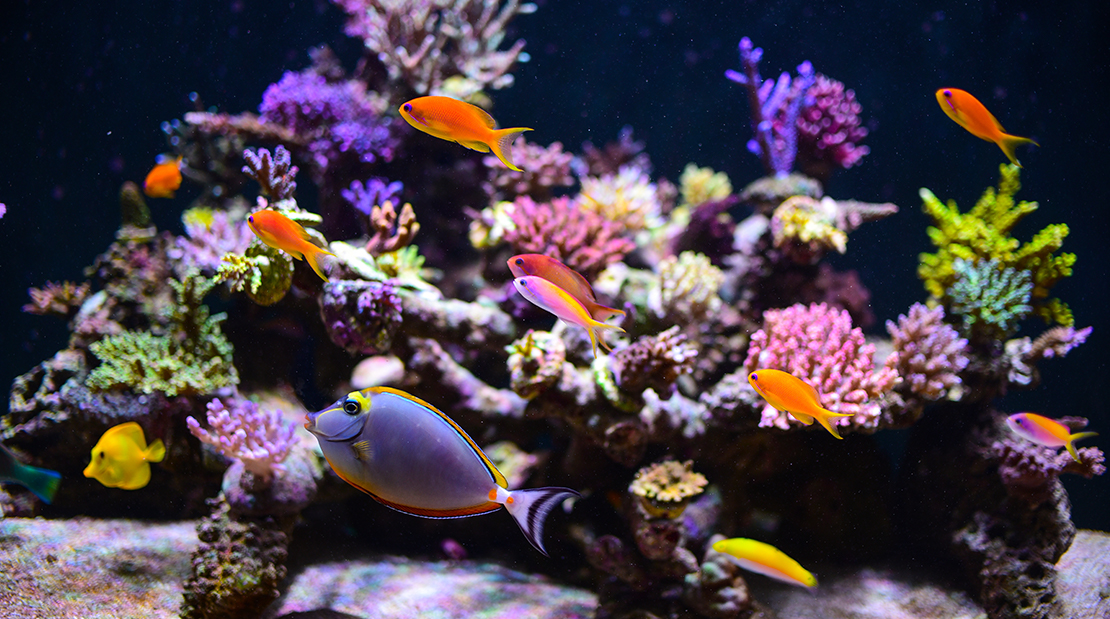
The Little Blue Sea
Many of us love oceans, beaches, and the tranquility of water. Well, we can’t always get to a beach when we want one, so aquariums certainly come in handy when we want calming scenery and the relaxing sound of water. Having an aquarium is a great option if you want to create a comforting environment in your home, office, or classroom—or if you want to teach your little ones responsibility and don’t want the extra work that comes with having a high-maintenance pet like a dog or cat.
But, before you dive into deep water and get your aquarium started, determine your skill level and the amount of time you can invest in caring for aquatic animals. Some fish are more demanding than others, so you want to take that into consideration, along with your budget. Freshwater fish are easier to care for than saltwater fish, and they are less expensive to purchase. Freshwater fish can use treated tap water as their medium to swim in, and typically only have daily feeding routines, minimal alteration of light (natural or synthetic), and monthly cleaning schedules. On the contrary, salinity plays a big role in the livelihood of saltwater fish. They require more monitoring to ensure pH and salinity levels are satisfactory to ensure the threat of disease and kill-offs is reduced.
Mixing fish in one aquarium is a safe and doable practice, depending on the type of fish. One of the main things to consider is the type and size of fish being mixed. Be sure to know their level of aggression and their habits because mixing aggressive and non-aggressive fish could have a negative result. Plus, take into consideration the size of the tank. For example, it’s not ideal to mix cichlids with a Black Molly, a Piranha with a goldfish, or a guppy with a sea bass or catfish. I also don’t recommend mixing salt and freshwater fish due to the specific environments they each need for survival.
Aquarium décor is a part of what makes them so attractive. But, beware, you should choose your items depending on the type of fish you have, and what’s in their normal environment, whether sand, gravel, large rocks, or seagrass. Know your fish and what they like. Be sure to determine what your fish tolerate best and what will cause them to thrive. Once that’s decided, then choose the items your fish will hide and live around. Some like live plants, others prefer artificial plants. Some use structures to hide in or for cover or breeding. Structural options include large rocks, a cave, or driftwood. However, I don’t recommend incorporating live plants if you have fish-eating plants such as cichlids. Some fish scavenge a lot, so sand can be an issue if they ingest it. Be sure to avoid items that may leach dye and those that are not “fish-tank approved.” I recommend sharp and heavy object be avoided as well because that type of décor could cause the tank to shatter or damage the fish
These are a few basic tips to get you started on your aquarium. In the next blog, I’ll cover routine maintenance practices.

